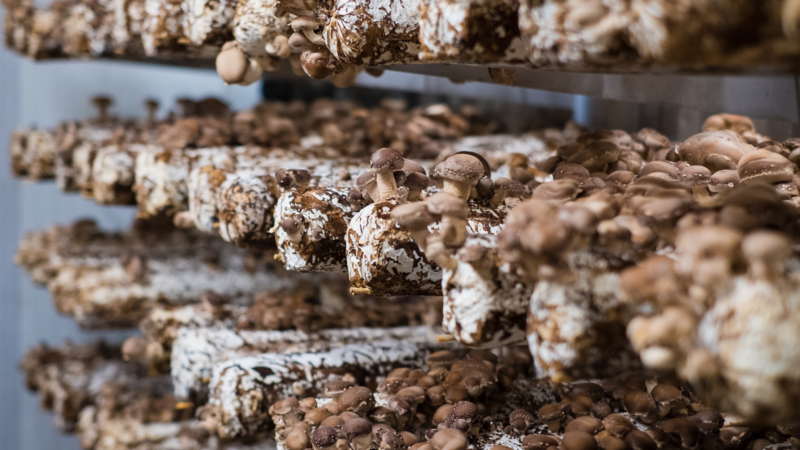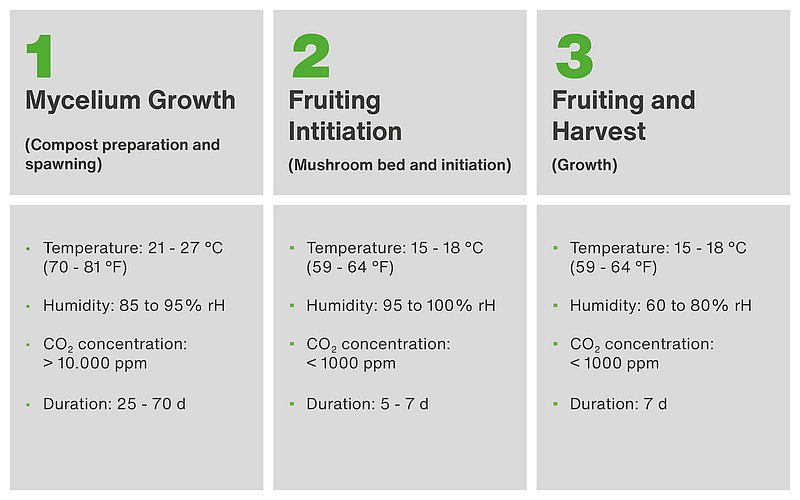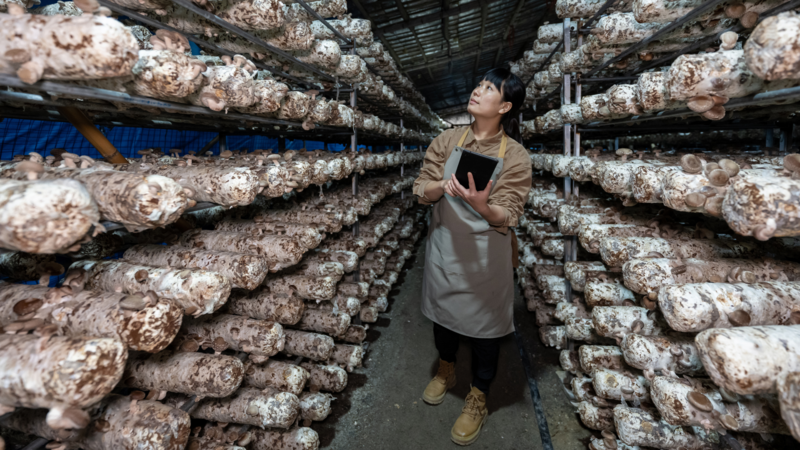Mushroom Cultivation Temperature and Climate Control: Choosing the Right Sensors is Crucial

In mushroom cultivation, climate conditions determine growth, yield and quality. Throughout the entire growth cycle, it is essential to maintain the right mushroom cultivation temperature, humidity, and CO₂ levels. The challenge for growers and system integrators is to measure and control these climate parameters as accurately as possible. This makes the choice of sensor technology crucial – high demands must considered from the start.
Precise Mushroom Cultivation Temperature Creates Natural Conditions
What occurs only seasonally in nature must be ensured all year round in mushroom cultivation: optimal temperature, humidity and CO₂ concentration for healthy growth. Special attention should therefore be given to the selection of each component in the climate and humidification system – particularly the sensors for monitoring mushroom cultivation temperature, humidity, and CO₂ levels. The challenge: mushroom cultivation requires technology that can withstand high humidity, temperature fluctuations, steam, and cleaning processes, as well as organic contamination.
The Different Phases of Mushroom Cultivation
Ensuring mushroom growth indoors means reproducing natural conditions as precisely as possible. Consequently, the requirements for mushroom cultivation temperature, humidity, and CO₂ control are defined by the individual phases of the growth process – from substrate preparation to harvesting.

Phase 1: Mycelium Growth | Constant Temperature, High Humidity, and Elevated CO₂
Fresh compost forms the basis for mushroom cultivation. The fungal threads (mycelium) are spread over it and fully colonize the compost within 2–3 weeks. During this phase, conditions must remain warm, humid, with high CO₂ concentration, and minimal light. The right mushroom cultivation temperature is essential to ensure healthy development.
Phase 2: Fruiting Initiation | Gradual Reduction of Temperature
In the next step of industrial mushroom cultivation, the prepared compost is placed onto special growing beds in ripening chambers. A precisely defined process follows: the temperature is kept constant, while light and fresh air are supplied at regular intervals. Over several days, the beds are watered, and the relative humidity is raised to nearly 100% by gradually lowering the mushroom cultivation temperature. As a result, the mycelium contracts and forms small primordia (pins) from which the mushrooms develop. In this phase, CO₂ levels are reduced to around 800 ppm, ensuring the right conditions for fruiting initiation.
In this phase, mushroom cultivation temperature, humidity, and CO₂ levels play a decisive role in mushroom growth.Inaccurate sensor data can negatively affect the entire harvest.
Phase 3: Fruiting and Harvest | Keeping Conditions Stable
During the fruiting phase up to harvest, mushroom cultivation temperature, humidity, and CO₂ levels are kept constant for up to seven days. Humidity is gradually reduced to align more closely with ambient conditions. Within one week, the mushrooms reach their optimal harvest size of around 3 cm [1.2 inches].
| Phase | Duration | CO₂ Level | Temperature | Relative Humidity (rH) |
|---|---|---|---|---|
| Mycelium Growth | 35-70d | > 10,000ppm | ~25 °C [77 °F] | 85-95% |
| Fruitening | 5-7d | < 1,000ppm | 15–18 °C [59–64 °F] | 95-100% |
| Harvest | 7d | < 1,000ppm | 15–18 °C [59–64 °F] | 60-80% |
Measuring Humidity, CO₂, and Mushroom Cultivation Temperature
Throughout the different phases, the right climate control is crucial for successful mushroom cultivation. The sensors used play a central role: they must measure mushroom cultivation temperature, humidity, and CO₂ levels with precision and reliability in a highly demanding environment. Any unnoticed deviation or inaccurate measurement directly impacts mushroom quality and leads to financial loss.
When selecting suitable sensor technology, it is therefore essential to define the requirements carefully, taking the specific environmental conditions of mushroom cultivation into account.

Mushrooms Like It Damp and Dirty – Sensors Do Not
For optimal mushroom growth, the right environmental conditions are essential. Constant high humidity and contamination from released spores pose a particular challenge for sensor technology.
- Condensation and deposits on sensitive sensor elements can impair measurement performance and even lead to corrosion.
- Spores released by the fruiting bodies (3–15 μm) spread throughout the facility. The developing mycelium covers surfaces and may result in incorrect measurements – potentially causing the loss of the entire harvest.
The use of high-precision sensors enables reliable and finely tuned climate control within mushroom cultivation facilities. Accurate monitoring of mushroom cultivation temperature, humidity, and CO₂ concentration ensures stable growth conditions throughout the process.
The result: consistent yields, high product quality, and reduced waste. Mushrooms grow more evenly, leading to a uniform appearance and higher market value.
At the same time, the need for unexpected interventions decreases, as deviations are detected early and can be corrected before problems escalate – saving time and resources while making production more efficient and predictable.
Learn more about sensor technology for precise mushroom cultivation.
- Go to previous Blog Post: E+E Elektronik at Meteorological Technology World Expo 2025: October 14-16, 2025 E+E Elektronik at Meteorological Technology World Expo 2025: October 14-16, 2025 previous
- Cosy Climate in the Greenhouse - Climate Sensors Ensure Optimum Growing Conditions next Go to next Blog Post: Cosy Climate in the Greenhouse - Climate Sensors Ensure Optimum Growing Conditions